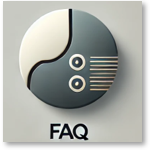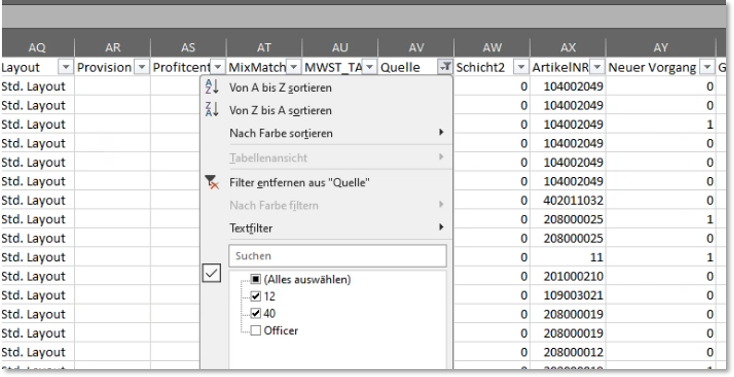mPOS questions & answers FAQ

With the versatile mPOS solutions, mobile devices such as mobiles, tablets and other mobile devices can be linked to a stationary payment terminal (cash register) so that bookings can be made regardless of the location of the service staff. Basically, a distinction is made between the standard mPOS and the mPOS Client-Server / mPOS Freestyle UX system.
-
Standard mPOS includes professional Windows-based devices such as the "Orbit", "Orbit NEXT" or the "Sonic" (mPOS Handheld) or the "Hypersoft Tablet //4" (ePOS Tablet), which are specially designed for the catering industry.
-
Client-Server mPOS offers the possibility to work from payment terminals (PayPOS) as well as Android and iOS devices (Freestyle UX or mPOS Client). Freestyle UX is the flexible solution that allows you to connect up to 22 devices to one payment terminal. The mPOS client variant, on the other hand, is set up once on a device for fixed use.
Further documentation: mPOS Client Questions & Answers FAQ.
error messages
- Own blocked operation / table: The mobile device establishes a connection to the POS server and records the operation. When closing the transaction (on account or new balance), the mPOS program terminates this connection. If the device is switched off beforehand or simply "put away" with the open procedure, or if you leave the radio range beforehand, the transaction is blocked unintentionally. The mPOS system usually corrects this operating error within about three minutes.
- Foreign device records the process: See previous topic. However, it can also be a payment transaction that was sent to an payment terminal with a cash register connection and was not (yet) completed there. This, too, is usually corrected automatically within a few minutes. In absolute exceptional cases, the main cash register or the server must be restarted (please inform our support about the latter).
-
Server does not respond during the start-up process: Check whether the Hypersoft cash register or the mPOS server and Hypersoft mPOS UX are installed on the terminal. In addition, the entire POS infrastructure must be on the same network as the searching device.
-
Unit stands still "frozen": This could be due to several factors and influences on the system. e.g. WLAN signal too weak or also outdated hardware in interaction with the devices (often inadequate cabling). If necessary, you can perform a reset with the gesture "drag two fingers from left to right on the display".
General questions about the mPOS system
For detailed specifications, see POS Mobile handhelds.
With mPOS Freestyle UX you can connect (even spontaneously) up to 20 devices simultaneously, without complex configuration and individual licences.
For compatibility, please check the whitelist table.
With a belt printer and / or you use digital receipts with NoCOO - Digital Billing.
Yes, you can (depending on the model) activate the camera function on the mPOS and scan the customer or voucher cards accordingly, whether QR code or barcode.
You can use the Hypersoft Kitchen Monitor System or the QSR Kitchen Monitor System.
Press and hold the CAM key to start Quick Mode. With Quick Mode, you open transactions for quick processing without transferring the bookings to the mobile device.
The mPOS Simple Order is set up variably and also allows the operator to book and cash out by pressing a button on the defined table.
Every standard cash register (Lifestyle 2) has an integrated camera, which can be started via the start entry on the hardware and can be viewed via the mPOS Cam function. You can also use other USB cameras. IP cameras are currently not supported.
No, the mPOS tablets (landscape format) and mPOS solutions (portrait format) are fixed. You could install an mPOS CLient on a tablet, but then you would have a very large display because it is designed for mobile sizes.
As a rule, operator turnover can be used for this purpose if it is possible to draw conclusions about the mPOS devices on the basis of the operator names. However, if the operators work alternately at the POS and mPOS, it becomes difficult because the mPOS devices run as a subsystem on a main cash register and do not have their own station name. As a certain interim solution, you can create a journal export and set the file via a filter in Excel in such a way that you receive the turnover separated according to POS and mPOS. In the Source column, 40 stands for Clou Mobile bookings (mPOS bookings) and Officer for POS bookings (40 can be neglected in this example).

Questions about WLAN
You can expect 100% availability and fast response times from a correctly set up system without external disturbances. The following are tips in case of an error:
- Consider the chapter WLAN Notes and Mobile Device Practice.
- If your employees have to leave the radio area regularly (e.g. in the kitchen), this can cause interference. Install WLAN in such areas as well, so that the devices always remain connected when in use.
- Pay attention to the correct position of the antennas. Consider the influence of human bodies when installing and testing in empty operation.
- Do not use systems that are too complex in terms of technical redundancy. Deactivate such redundancies as a test.
- The timer should be correct, avoid time differences between mobile device and IIS device (server).
- If problems occur at the edge of your WLAN area, it can be helpful if your own body is not between the mobile device and receiver, hold the device sideways.
What does the information dialogue Connection problems mean?
Waiting times during the WLAN connection that exceed the set tolerance cause the mPOS Handheld Connection Service to be started.
How do mPOS and mPOS Client-Server differ in terms of data traffic?
Both systems mainly run via WLAN, LAN use is also possible (ePOS Tablet). The mPOS system stores the master data and the bookings locally in the device and can therefore also be used temporarily independently of a radio connection to collect the bookings (the connection must be available to send / use the bookings). The mPOS client-server system uses the user interface as well as the data of the server and requires a good and uninterrupted W-LAN connection, otherwise no entries can be made either. The system sends graphics and coordinates instead of data, which is why it transports much more data.
Questions about mPOS Freestyle
The rejected operator is known in Hypersoft, but has not completed an mPOS Freestyle registration himself. See the topic of mPOS Freestyle rejects "external" operator logins.
Configuration questions
By default, a subsystem is set up on the server (on the main cash register) and configured with its station settings as you need it for the mPOS system. In addition, you have many settings in the mPOS system itself and also the possibility to use SmartSwap. As a rule, one subsystem controls all mPOS devices.
If it seems urgent, then you can install more than one IIS as an exception in order to use several independently adjustable mPOS systems within one client.
Questions about PayPOS
Yes, read PayPOS fixed payment terminal assignment.
hardware
Pairing is only possible with special drivers and according to instructions. Look at this: Pair Bixolon Bluetooth Belt Printer
Look here: 3. Hardware requirements
Use the new Rocket as a professional Android device, or one of our payment terminals with PayPOS. In certain situations, you can also use standard Android devices in mobile or tablet format.
Blue-tooth printers are usually better because the radio link directly from the mobile device to the printer is much shorter, more reliable and faster. Please note that with the CLOU MOBILE for Windows and mPOS system, a mobile printer should also be available for each mobile device, because with print redirection or for devices that do not have their own printer, all print jobs must be statically redirected to one and the same alternative printer. This is due to the fact that the printer control from the mobile device does not react as flexibly as from the POS system. The POS system controls the WLAN printers and can be configured more extensively for "missing" and failing printers.
Back to the parent page: Hypersoft mPOS